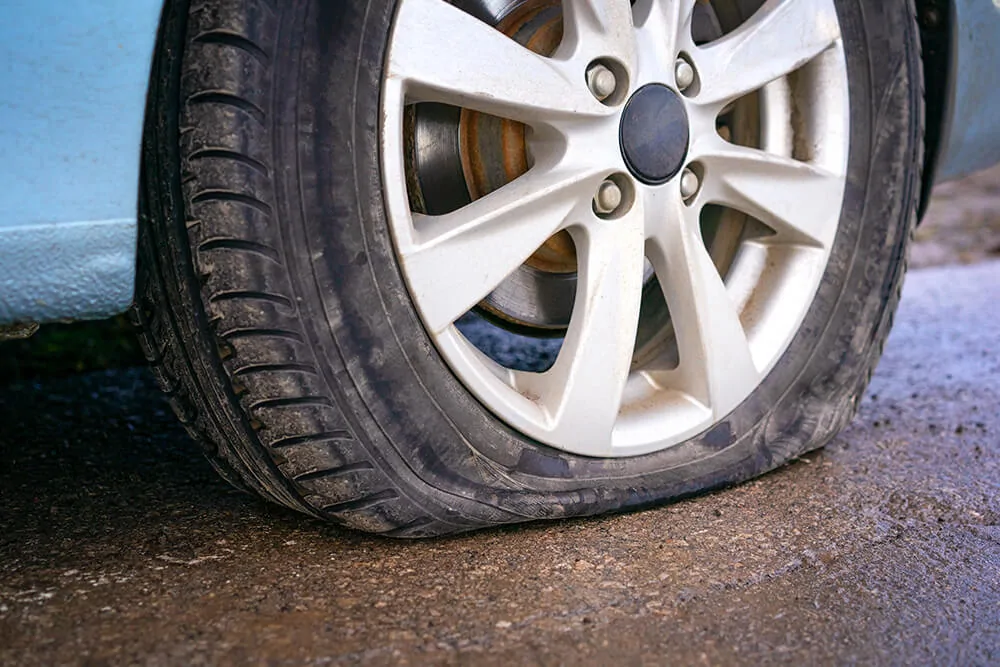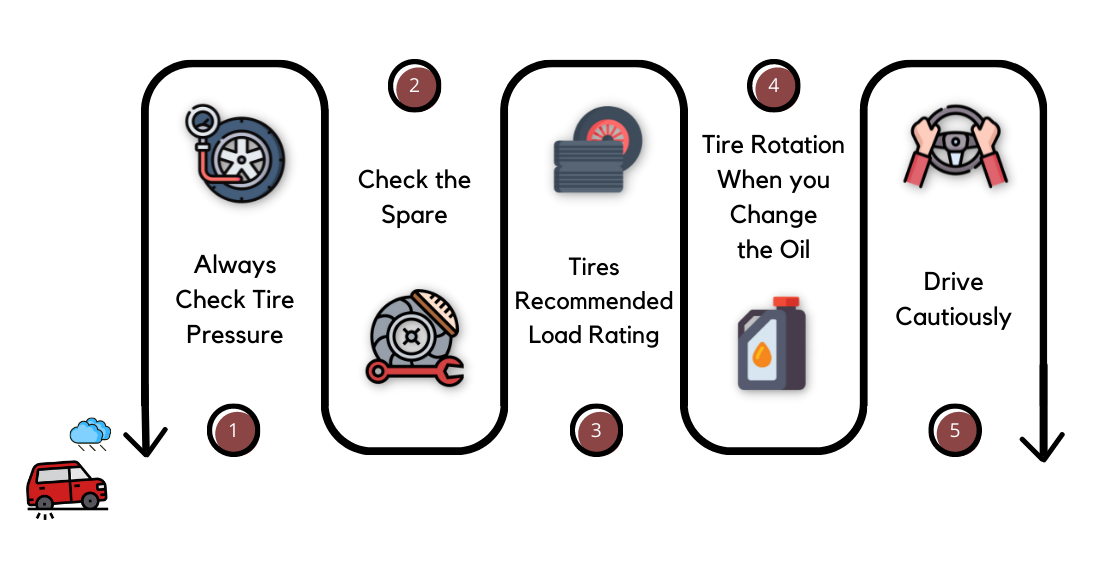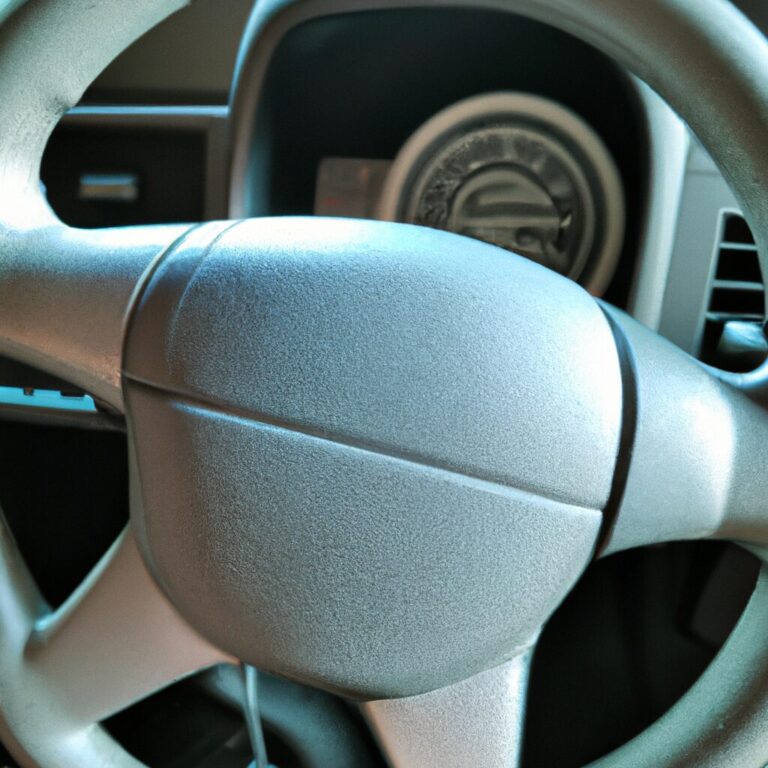How to Avoid Flat Tires
To avoid flat tires, regularly check tire pressure and tread depth, avoid potholes, and drive carefully. Flat tires can be frustrating and inconvenient, often leaving you stranded on the side of the road.
By following a few simple steps, you can minimize the chances of encountering this common issue. Keeping a close eye on your tire pressure and tread depth can help prevent unexpected flats. Additionally, being mindful of potholes and other hazards on the road while driving can further reduce the risk.
By incorporating these habits into your routine maintenance and driving practices, you can stay ahead of potential tire problems and enjoy a smoother, less stressful journey.
Proper Tire Maintenance
Maintaining proper tire pressure and inspecting for wear regularly are essential in avoiding flat tires. Additionally, avoiding hazards on the road, such as potholes, and driving carefully can also significantly reduce the risk of a flat tire. Regularly rotating and balancing tires also helps optimize their lifespan and prevent uneven wear.
One of the most basic yet essential aspects of avoiding flat tires is proper tire maintenance. By following a few simple steps and regularly inspecting your tires, you can significantly reduce the risk of encountering a flat tire on your journey. In this article, we will explore some key practices to ensure the longevity and reliability of your tires, helping you stay safe and worry-free during your travels.
Regular Inspections
To maintain the health of your tires, regular inspections are paramount. Take a few moments every month to thoroughly examine your tires for any signs of wear and tear. Start by visually inspecting the tread depth to ensure it meets the manufacturer’s recommendations. Adequate tread depth enables your tires to grip the road effectively, especially in wet or slippery conditions. If you notice uneven wear patterns or exposed cords, it may be time to replace your tires.
Table:
| Signs of Wear and Tear | Actions to Take |
|---|---|
| Uneven wear patterns | Consult a professional to check alignment and rotation |
| Exposed cords | Replace tires immediately |
In addition to tread depth, check for any visible punctures, bulges, or cuts on the tire surface. These can indicate potential trouble spots that could lead to a flat tire. If you notice any irregularities, it’s crucial to have them inspected and addressed promptly by a tire professional.
Maintaining Proper Tire Pressure
Another important aspect of tire maintenance is maintaining proper tire pressure. Incorrect tire pressure not only affects your vehicle’s overall performance but also increases the risk of flats. To ensure optimal tire pressure, check them regularly, ideally every month or before long trips.
How to check tire pressure:
- Locate the recommended tire pressure for your vehicle in the owner’s manual or on the driver’s side door jamb.
- Use a quality tire pressure gauge to measure the pressure in each tire. Place the gauge on the valve stem and press firmly to get an accurate reading.
- If the tire pressure is lower than the recommended level, add air. If it’s higher, release some air until it reaches the proper pressure.
- After adjusting the pressures, double-check to ensure they are within the recommended range.
Maintaining proper tire pressure not only helps prevent flats but also improves fuel efficiency and promotes even tire wear. Remember to check the pressure when the tires are cold, as it can fluctuate when they are hot from driving.
By adhering to these simple steps of regular inspections and maintaining proper tire pressure, you can significantly reduce the chances of encountering flat tires. Taking care of your tires not only adds to your safety but also extends their lifespan, saving you from unexpected expenses and inconveniences down the road.
Avoiding Road Hazards
Learn how to avoid flat tires with these simple tips: regularly check your tire pressure, inspect for any signs of damage, avoid potholes and debris on the road, drive cautiously in construction zones, and maintain a safe distance from other vehicles.
Following these guidelines will help keep you safe on the road and prevent unnecessary flat tires.
Steering Clear Of Potholes
Avoid potholes by driving cautiously and scanning the road ahead. Maintain safe distance from the car in front to have a clear view of the road surface.
Avoiding Debris And Sharp Objects
Watch out for road debris and sharp objects. Stay centered in your lane to reduce the risk of running over potential hazards.
Investing In Quality Tires
Prevent flat tires by investing in high-quality tires, boosting durability and performance on the road. Quality tires reduce the risk of flats, ensuring a smoother and safer driving experience.
Understanding Tire Ratings
When it comes to avoiding flat tires, having a good understanding of tire ratings is essential. Tire ratings help you determine the right tires for your vehicle based on factors like size, speed rating, and load capacity.
Choosing The Right Tread
Another crucial factor in preventing flat tires is selecting the right tread pattern for your tires. Tread patterns influence the tire’s grip, traction, and performance in different road conditions. Well-maintained treads reduce the risk of flat tires.
Investing in quality tires is key to avoiding frustrating tire issues and ensuring a safe driving experience. Quality tires are not only durable but also provide better performance and grip on the road, reducing the chances of flat tires. Opt for reputable brands known for their quality and reliability.
Understanding tire ratings helps you make an informed decision when purchasing new tires. Consult your vehicle manual or a professional to ensure you choose tires with the correct size, speed rating, and load capacity for your vehicle.
When selecting the right tread pattern, consider the typical driving conditions you encounter. For example, if you often drive on wet roads, opt for tires with a tread pattern designed to provide better traction in wet conditions, reducing the risk of hydroplaning and flats.

Credit: www.webbinsgroup.com
Safe Driving Practices
Learn to avoid flat tires by maintaining proper tire pressure, checking for wear and tear, avoiding potholes, debris, and sharp objects on the road, and being cautious while driving. Regularly inspect tires for any signs of damage to ensure safe driving practices.
Avoiding Aggressive Maneuvers
When it comes to safe driving practices, one of the key aspects is avoiding aggressive maneuvers. Aggressively accelerating or braking can put extra strain on your tires, increasing the risk of a flat. By maintaining a steady and consistent speed, you can reduce the chances of sudden tire damage.
It’s important to be mindful of the traffic around you and avoid tailgating other vehicles. Following at a safe distance allows you to react to any sudden stops without having to slam on your brakes. Remember, being patient and giving yourself plenty of time to reach your destination can help prevent flats caused by aggressive driving.
Being Mindful Of Curbs
Mindfulness is crucial when encountering curbs while driving. When parking, make sure to avoid hitting or driving too close to curbs. The impact can cause your tire to compress against the edge, potentially leading to a puncture or damage to the sidewall.
Additionally, when making turns, be cautious of the curbs. Turning too sharply and hitting the curb with your tires can result in immediate damage. This is especially important to keep in mind when navigating narrow or tight spaces.
Being mindful of curbs means taking extra care and paying attention to your surroundings, preventing unnecessary wear and tear on your tires. By doing so, you can go a long way in avoiding flat tires and prolonging the lifespan of your tires.
Emergency Preparedness
Emergency preparedness is essential for every driver to ensure a smooth journey, especially when it comes to avoiding flat tires. By being well-prepared, you can minimize the inconvenience of a flat tire and continue your travels safely. Here are some crucial tips for emergency preparedness on the road:
Carrying A Spare Tire And Tools
Every vehicle should always carry a spare tire in good condition. Regularly check the tire pressure of the spare to ensure it’s ready for use in emergency situations. Additionally, having the necessary tools such as a jack, lug wrench, and a flashlight can greatly assist in changing a tire efficiently. These tools should be easily accessible in the vehicle for quick retrieval during an emergency.
Knowing How To Change A Tire
Understanding the process of changing a flat tire is crucial for every driver. Be sure to familiarize yourself with the steps required to change a tire, as well as the proper placement of the jack and the location of the lug nuts. It’s recommended to practice changing a tire at home before encountering a roadside emergency to ensure you can handle the task confidently when needed.

Credit: carfixautorepair.com

Credit: surreytowing.ca
Frequently Asked Questions For How To Avoid Flat Tires
Can You Avoid Getting A Flat Tire?
To avoid getting a flat tire, follow these tips: regularly check tire pressure and tread depth, avoid driving over sharp objects or potholes, be cautious of curb damage, maintain proper wheel alignment and balance, and replace tires when necessary. Taking these precautions can help prevent flat tires.
Why Do I Always Get Flat Tires?
Flat tires can occur due to punctures, worn-out tread, or low tire pressure. Sharp objects on the road can cause punctures. Improper maintenance, such as not checking tire pressure, can also lead to flat tires. Regular maintenance and cautious driving can help prevent flat tires.
How Do You Stop Flat Tires?
To avoid flat tires, regularly check tire pressure, look for punctures or damage, drive carefully to avoid hitting obstacles, and install tire pressure monitoring system. Regular maintenance and cautious driving can help prevent flat tires.
What Do You Put In Tires To Keep Them From Going Flat?
Tire sealant is used to prevent flat tires. It is a liquid that is inserted into the tire and forms a protective layer. When a puncture occurs, the sealant automatically seals the hole, preventing air leakage. This helps to maintain tire pressure and avoid flat tires.
How Can I Prevent Flat Tires?
To prevent flat tires, regularly check tire pressure, avoid road hazards, and inspect tire treads.
What Tire Maintenance Can Reduce The Risk Of Flat Tires?
Regularly inspecting tire pressure, rotating tires, and keeping an eye on tread wear can reduce the risk of flat tires.
Why Is It Important To Check Tire Pressure?
Maintaining proper tire pressure ensures optimal performance, fuel efficiency, and reduces the risk of flat tires.
Conclusion
As we conclude this blog post on how to avoid flat tires, it is evident that regular maintenance and thorough inspections are key to preserving the condition of your tires. By following the simple tips and tricks outlined here, you can significantly reduce the chances of having a flat tire and the inconvenience that comes along with it.
Remember, prevention is always better than cure when it comes to tire maintenance. Stay proactive and stay safe on the road!


